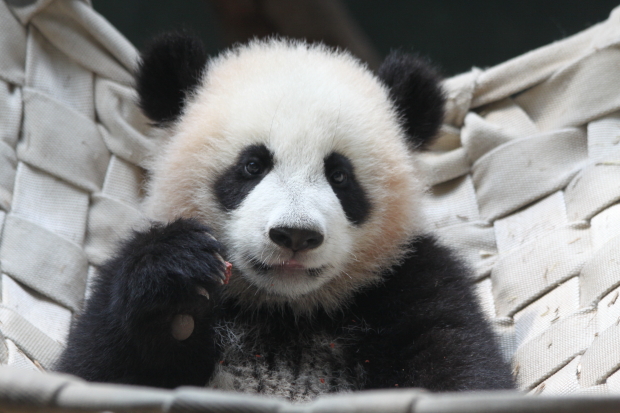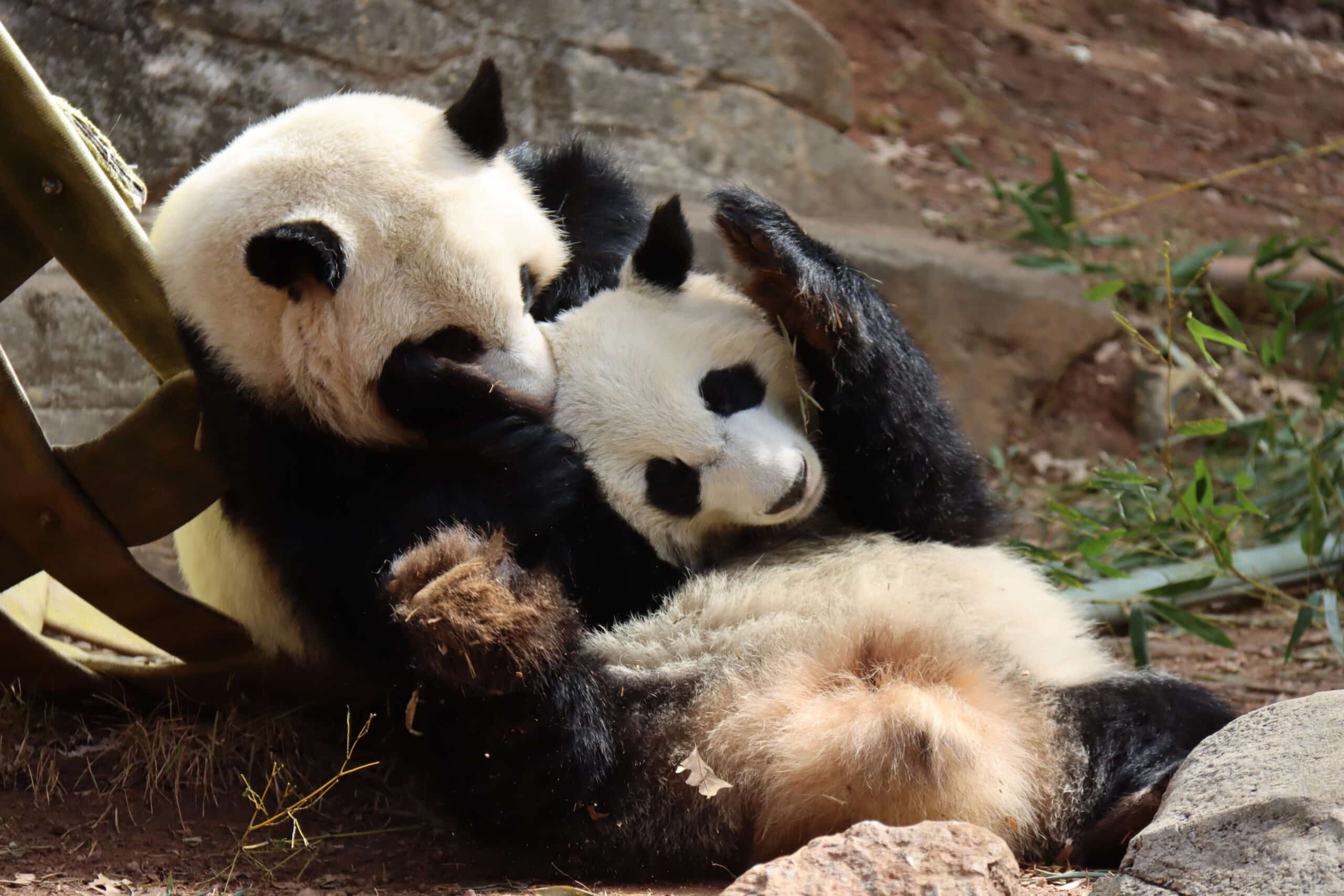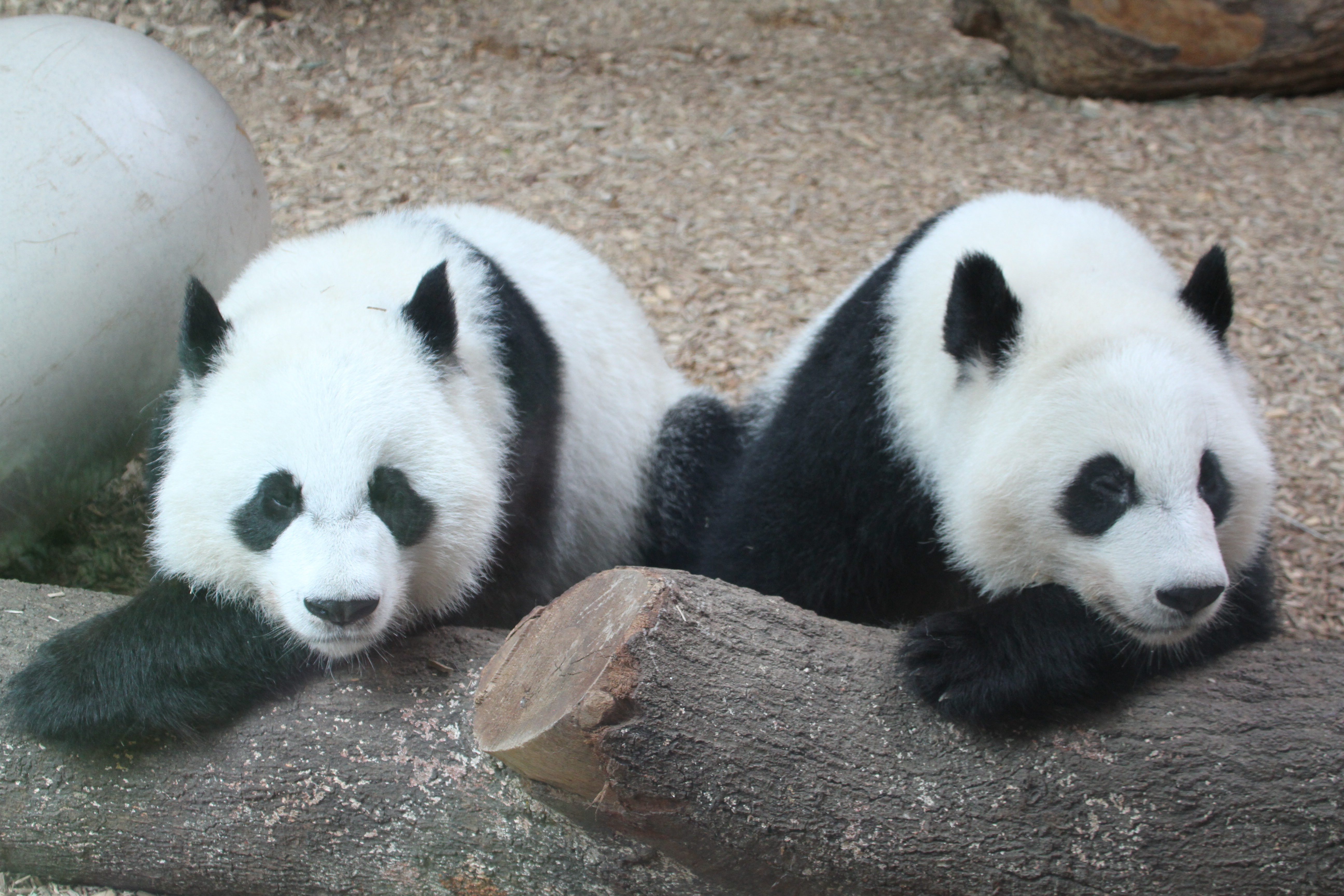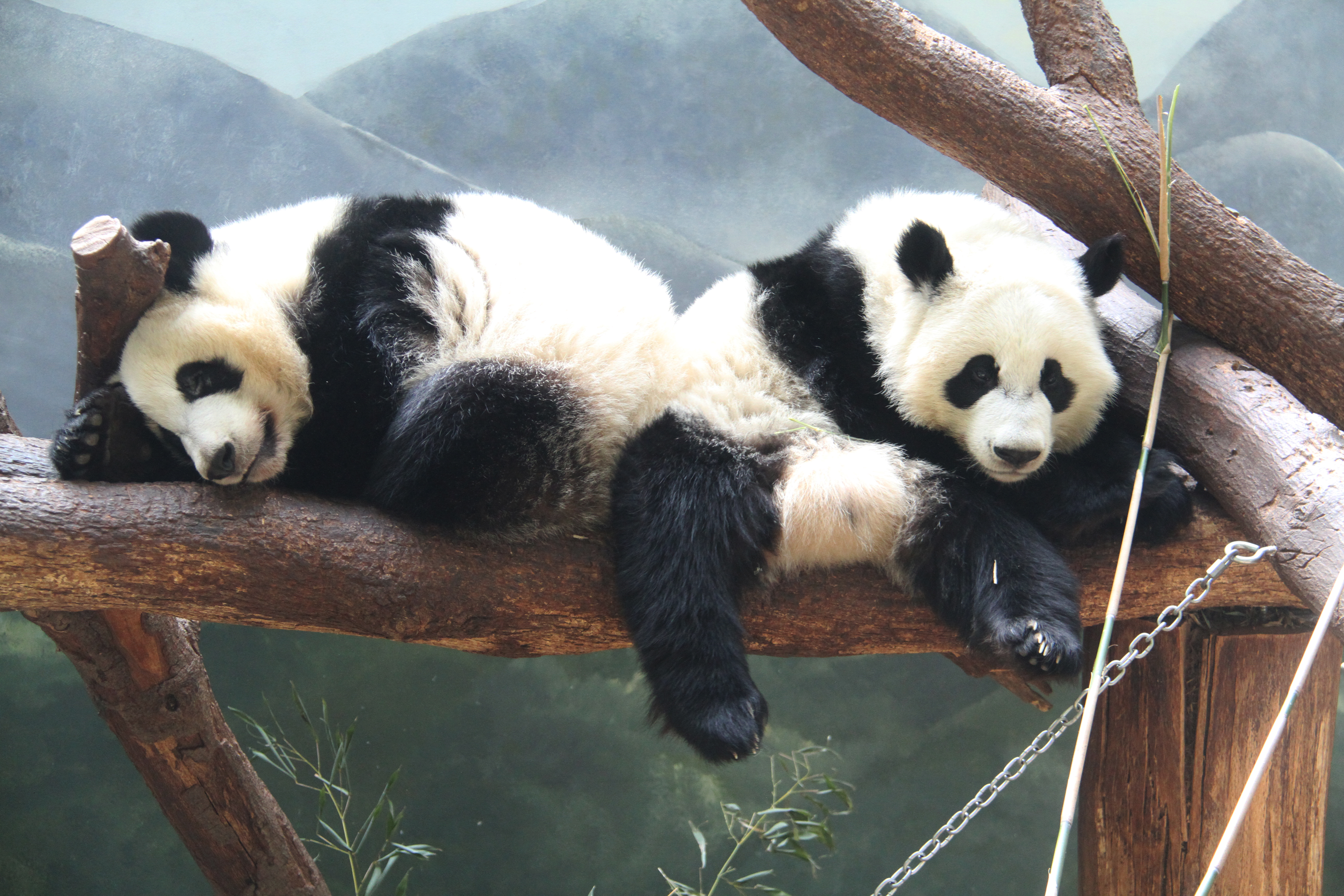Training Po

Some of Zoo Atlanta’s recent panda blog updates have been about training Po. Like all of the animals at Zoo Atlanta, Po is trained using positive reinforcement. Rebecca Snyder, Curator of Mammals, gives us some more info on Zoo Atlanta’s panda blog.
Positive reinforcement means that if he performs the behavior he is asked to perform, he receives a reward or reinforcement. The most common type of reward used with our animals is food. But a reward can be anything that the animal likes (e.g., a favorite toy, attention from keepers, an opportunity to be with or see a favorite social partner). For the giant pandas, the most powerful reward is preferred food, like sugar cane, fruit, or leafeater biscuits. Because Po is just starting to eat small amounts of solid food, we don’t have a very powerful reward to offer him, yet. But as he gets older, nurses less, and eats more solid food, he will be more motivated to participate in training. Then the keepers will start to work on more behaviors with him.
An important tool in positive reinforcement training is establishing a bridge. We use a whistle as a bridge. We pair the whistle sound with the reinforcement (e.g., food) repeatedly and pretty quickly the animal learns that the whistle or bridge means that he or she has done the right thing and that the reward will be coming. The bridge is important because we want the animals to know immediately when they’ve done the right thing and sometimes we can’t deliver the reward immediately.
Behaviors are taught in different ways. Sometimes a behavior is captured, which means the animal does a behavior on its own and we just catch the animal doing the behavior and reinforce it. Then we work to establish a cue, like a word command or hand signal, for the behavior. Sometimes we shape a behavior, which means we reinforce closer and closer approximations of the behavior we want until we reach the goal behavior. For more complex behaviors, like participating in an ultrasound, we chain together different behaviors to reach the goal behavior.
That gives you a brief overview on how we train animals at the Zoo. The concepts are fairly simple and basic, but applying them consistently and effectively requires practice and is a highly developed skill among our keepers. It is absolutely amazing to see the training accomplishments of our keeper staff. Many of them will tell you that training is one of their favorite parts of their job. It certainly makes it easier to care for the animals. And it makes the animals’ lives less stressful and more interesting.Rebecca Snyder (Curator of Mammals @ Zoo Atlanta)









